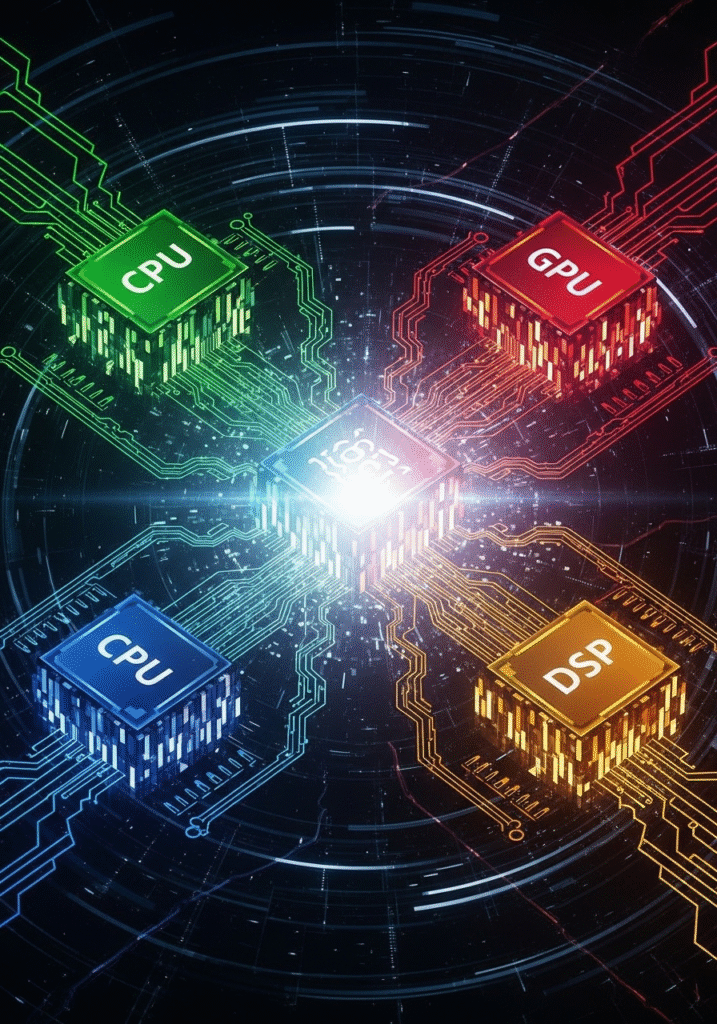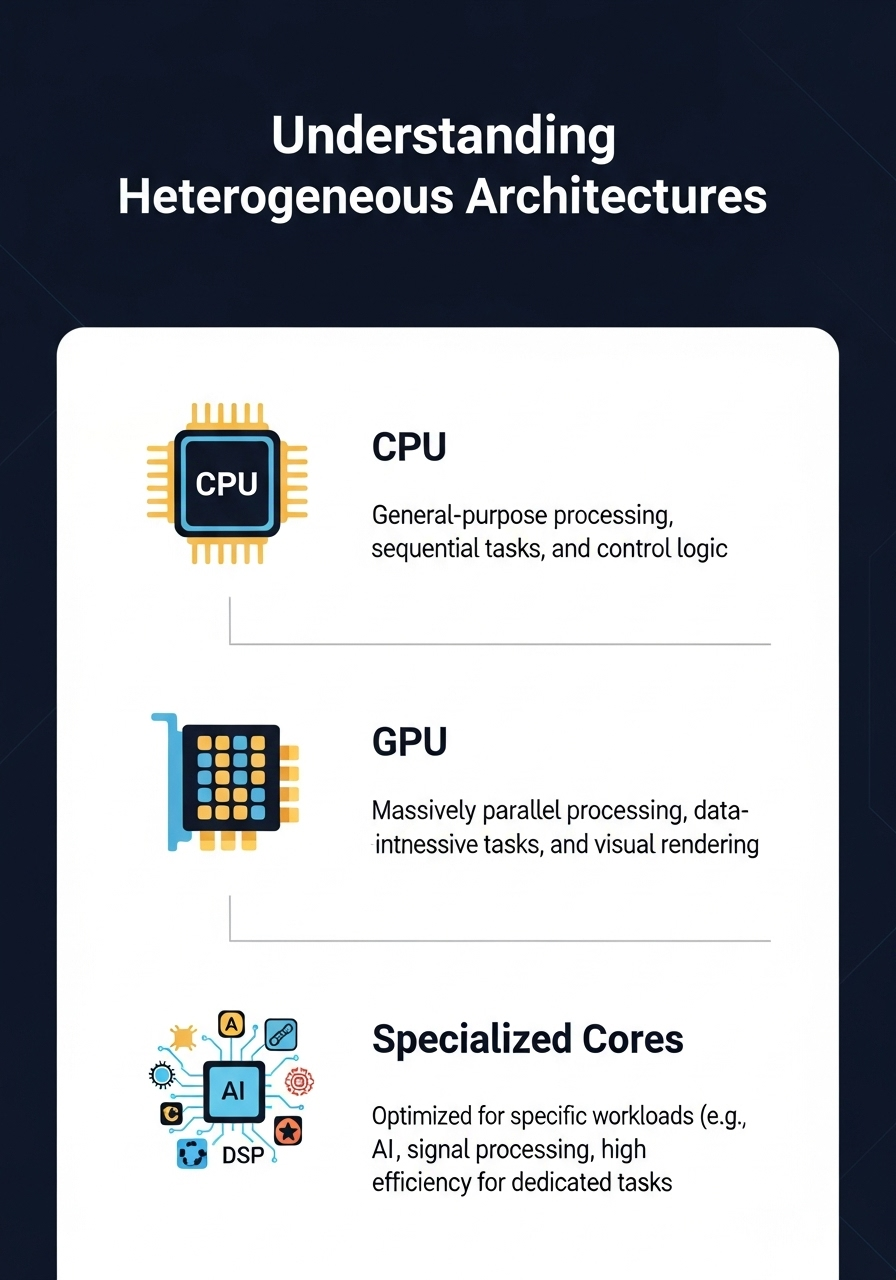
In the ever-evolving world of electronics and microprocessors, the quest for greater processing power and efficiency is relentless.
Traditional homogeneous architectures, relying solely on identical CPU cores, are increasingly hitting performance and power consumption ceilings.
This has led to the rise of heterogeneous architectures
– a revolutionary approach that combines different types of processing units (cores) to unleash unprecedented levels of power and efficiency.
This blog post will delve into what heterogeneous architectures are, why they are crucial for modern computing, and how they are shaping the future of microprocessors.

Videos are added as random thoughts 💭 💭 💭.
What are Heterogeneous Architectures?
At its core, a heterogeneous architecture integrates various types of processing units onto a single system.
Unlike homogeneous systems that use multiple identical CPU cores, heterogeneous systems leverage specialized cores, each optimized for different kinds of tasks.
The most common example involves combining Central Processing Units (CPUs) with Graphics Processing Units (GPUs).
However, this can also extend to Digital Signal Processors (DSPs), Field-Programmable Gate Arrays (FPGAs), and Application-Specific Integrated Circuits (ASICs).
The key idea is to assign tasks to the processor best suited for them.
CPUs excel at sequential processing and complex control tasks, while GPUs are highly efficient at parallel processing,
making them ideal for graphics rendering, scientific simulations, and machine learning.
By intelligently distributing workloads, heterogeneous architectures can achieve higher performance with lower power consumption.
Why are They Crucial?
1. Optimized Performance: Different tasks have different computational requirements.
A heterogeneous system can allocate tasks to the most efficient core, leading to significant performance gains.
For instance, a GPU can process thousands of data points simultaneously, a task that would bottleneck a CPU.
2. Energy Efficiency: Specialized cores can perform their specific tasks more efficiently than a general-purpose CPU trying to handle everything.
This translates directly into reduced power consumption, which is critical for mobile devices, data centers, and embedded systems.
3. Flexibility and Scalability: These architectures offer greater flexibility in system design.
Developers can choose the right mix of cores to meet specific application needs, allowing for scalable solutions that can adapt to diverse workloads.
4. Cost-Effectiveness : By optimizing resource utilization and reducing power demands, heterogeneous systems can offer a more cost-effective solution in the long run, especially for high-performance computing and large-scale deployments.
Real-World Applications
Heterogeneous architectures are already prevalent in many devices we use daily:
Smartphones and Tablets: These devices often combine CPUs for general tasks, GPUs for graphics and gaming, and DSPs for audio processing, ensuring a smooth and efficient user experience.
Gaming Consoles: Modern consoles heavily rely on heterogeneous designs to deliver stunning graphics and complex game physics.
Data Centers and AI: GPUs are widely used in data centers for accelerating AI workloads, machine learning training, and big data analytics.
Automotive: Autonomous driving systems utilize heterogeneous processors to handle real-time sensor data processing, path planning, and decision-making.
The Future of Microprocessors
The trend towards heterogeneous architectures is only accelerating.
As the demand for more powerful yet energy-efficient computing grows, we can expect to see even more diverse combinations of specialized cores.
Future developments might include:
More Specialized Accelerators: Beyond CPUs and GPUs, we might see widespread integration of custom accelerators for specific AI tasks, cryptography, or other emerging computational needs.
Advanced Interconnects: Improved communication fabrics between different cores will further reduce latency and enhance overall system performance.
Unified Memory Architectures: Efforts like Heterogeneous System Architecture (HSA) aim to create a unified memory space accessible by all processors, simplifying programming and improving data sharing.
Conclusion
Heterogeneous architectures represent a significant leap forward in microprocessor design.
By intelligently combining different types of processing units, they offer a powerful solution to the challenges of performance, efficiency, and scalability in modern computing.
As technology continues to advance, these diverse core combinations will undoubtedly unlock new possibilities and drive innovation across various industries.
The future of processing power is heterogeneous, and it’s incredibly exciting to witness its unfolding.
